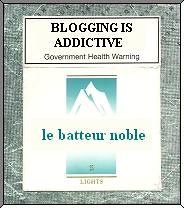Here is a descriptive study that we did (a colleague and I) during the July war while volunteering in a Relief Center in Beirut (SRC), I wanted to share it with you. The origin of the study was very spontaneous and consisted of collecting data from the volunteers working there. I'll leave you with the first part of it. (follow the link for the full PDF article and the graphs)
12 July 2006, a sudden Israeli aggression displaced within weeks 1.000.000 Lebanese people. Terrorized by the shower of bombs and rockets, populations of South Lebanon and of the Southern suburb of Beirut took shelter in empty schools and other public buildings of the capital. As soon as the first refugees had arrived to these safer areas, NGO-s, influential political parties, and civil society mobilized their personnel and militants and switched their plans of actions to dedicate all their resources into relief efforts targeting the Internally Displaced Population (IDP). At the same time spontaneous relief operations took birth. Those centers had to improvise the logistics of operations since relief was not their core competency. Nevertheless they have been holding the greatest burden of IDPs relief responsibility as late as 3 weeks after the arrival of first refugees. One of the first spontaneous and independent centers was born meters away from the Sanayeh public garden, in the so-called Zico House. It is the Sanayeh Relief Center (SRC) – Samedoon which carried the bulk of the relief operation in 24 refugees' centers.
Before the war, Zico House was a socio-artistic phenomenon in Beirut. It hosts several venues: Beirut Street Festival and other avant-garde art festivals and serves as hostel for artists. It was also the home of diverse NGOs such as Green Line, Lebanese Association for Democracy of Elections, Helem, and Women in IT in addition to the artsy cafe-bar "Samra". With the arrival of the first refugees to the near-by Sanayeh Park, people who used to attend Zico House for this or that reason gathered in its café to discuss the actual situation. Naturally, the initiative of organizing a relief operation came about. The premises of Zico House quickly transformed to providing five directions of relief to IDPs: 1-essential needs provision, 2-hygienic needs provision, 3-medical care, 4-children animation, and 5-psycho-social support. All the work there was planned and carried out by volunteers who were not remunerated. Relief work was supported by NGOs like Physicians Without Borders, Oxfam, Red Cross, ARI and others. The guidance and organization of the work were kindly provided by Professors and members from the Faculty of Health Sciences of the American University of Beirut, who volunteered to promote scientific references of relief work.
We were interested to find out who are these people who decided to join a non-affiliated relief center while they could have joined a multitude of others, belonging to political parties or to religious welfare institutions, which are richer and more organized. We took a random sample of 80 among the 220 who were subscribed the 21th of July or the 7th day of hostilities. (Read more)
vendredi, mai 18, 2007
Inscription à :
Articles (Atom)



